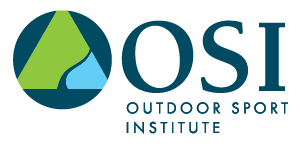Three Simple Habits for Good Design
Joshua Firmin | OSI Assistant Director
Design. A concept that is all at once incredibly simple and infinitely complex. If you consider it, design is tied into pretty much every aspect of our lives. The layout of a city street, the shape of a furniture piece, and even the user interface of our phones are all controlled by design. Often it’s very easy to spot poor design, and in many instances good design is done so well that it isn’t noticed at all. The application of design is so pervasive that there are even institutions of higher learning that focus exclusively on design principles and developing a designer’s eye. At its core, design is the catalyst that leads to the development of exceptional products and services through a deep understanding of people and their needs.
Fundamentally as coaches, mentors and leaders of outdoor sport, we are always striving to create experiences that are optimized for our participants to be successful. Just like everything else, the world of outdoor sport is not insulated from of poor design. A good designer’s mindset isn’t always intuitive. Developing some simple design habits can increase your ability to design better participant experiences. Whether preparing a session, developing a program, or working with outdoor sport participants in some other capacity, the following are three easily implemented design habits that can improve the participant experience of learning outdoor sport.
1. Consider Your Audience
This is the one of the most basic tenants of design in any regard. Before you can develop a good lesson or several days of an experience, it is critical to consider whom you are working with. At OSI, the development of any fieldwork always begins with three simple questions:
Where are the participants at? Are they beginners? Are they bringing any previous experience to the table? What perspectives are they coming with? Whether done for a group or an individual, this question allows for critical thinking about the participants that we are working with so we can meet them at their level.
Where do we want them to be? This helps identify the goals for our time with participants. It’s good practice to have a few specific outcomes to focus on, but remember that can only process so much new material at a time. Once the brain gets overloaded with information you reach a point of diminishing returns. As and example, the desired outcomes of an after-school nordic ski session could be learning how to kick-turn and understanding how to dress for skiing.
How do they get there? Once you have determined where you want participants to be, you can design the path to take them there. What are the progressions you will use? How will you layer information? What drills and/or games will help reinforce the concepts. This is the step where you can really get creative in how you are presenting information to effectively meet the needs of your participants.
2. Don’t Create in a Vacuum
When working with students in outdoor sport, sometimes it can feel like you have to start from scratch and figure everything out on your own. Thankfully, in this modern age that is far from the reality. There are endless resources that can serve as great inspirations for teaching outdoor sport. Thanks to the miracle of modern communication most of these resources are only a click away. Our hope with the “Coaches Network” Slack space is to connect passionate community members from around the state to share ideas within a diverse and supportive community.
The habit of considering what else is out there allows you to build your knowledge base and inspire your personal style and creativity. In some instances you may stumble across something that perfectly fits your needs and saves you the work of designing from scratch. Our Curriculum Guides are a great example of an existing resource that can serve as a foundational guide for programming in a variety of outdoor sports. There’s a saying that imitation is one of the most sincere forms of flattery, so don’t be afraid to take what others are doing, add your own style, and make it original to you.
3. Reflect and improve
No matter how well designed something may be, there is always room for improvement, and the habit of reflection is an important part of the process. Similar to the development process, at the conclusion of all OSI fieldwork we use a set of questions to guide the reflective process and capture notes for future use. Questions like “What went well?” and “What would you do differently next time?” are common examples. Taking the time to make observations and critically evaluate your work can help identify the strengths and weaknesses of a particular design. The learning can then be applied to future design iterations.
As coaches and mentors of outdoor sport, applying good design habits to our work can create huge successes for our students and ourselves. As with any good habit, it takes time and intention to become second nature. Once these habits are a part of your design repertoire, though, they will become some of your most powerful tools. Creating design habits around audience awareness, additional resources, and reflective learning all increase your capacity to design an excellent experience for you and the people you work with.

